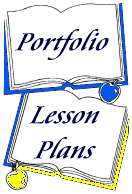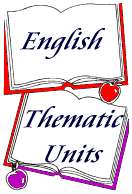![]()
|

Nouns and Pronouns
Nouns
A noun is a word that names
a person, place, or thing (including a quality or idea). Nouns fill the headword
slot in the noun phrase. Most nouns can be inflected for plural and possessive
(boy, boys, boy's, boys'). Nouns have characteristic derivational endings, such
as -tion (compensation), -ment (contentment), and -ness (happiness). Nouns can
also function as adjectivals and adverbials (The neighbor children went home.)
Person: woman, Sandra, pet, Sylvia Plath
Place: kitchen, city, park, Colorado
Thing: tree, ship, cereal, U.S.S. Iowa
Quality or idea: love, height, democracy, motion
|
Pronouns
A pronoun takes the
place of (stands for) a noun (pro- means "for" or "instead
of"). The noun that a pronoun stands for is called the antecedent of that
pronoun.
Indefinite
Pronouns
These are quantifiers, universals, and partitives.
Personal Pronouns
These refer to a specific person or thing.
Possessive Pronouns
These refer to a specific person or thing in a possessive sense.
Reflexive Pronouns
A pronoun formed by adding -self or -selves to a form of the personal
pronoun, used as an object in the sentence to refer to a previously named
noun or pronoun.
Relative Pronouns
These are pronouns that introduce a relative clause.
|
Subject Case |
Object Case |
||
| First-Person | |||
| singular |
I |
me |
|
| plural |
we |
us |
|
| Second-Person | |||
| singular |
you |
||
| plural | |||
| Third-Person | |||
| singular | masculine |
he |
him |
| feminine |
she |
her |
|
| neuter |
it |
||
| plural |
they |
them |
|
| What is it? | A personal pronoun is used to refer to a nearby noun or noun phrase antecedent or to stand for a person, place, or thing that has been identified in the nonverbal context. |
| Rules: |
|
| Tests: |
|
| First-Person | ||
| singular | myself | |
| plural | ourselves | |
| Second-Person | ||
| singular | yourself | |
| plural | yourselves | |
| Third-Person | ||
| singular | masculine | himself |
| feminine | herself | |
| neuter | itself | |
| plural | themselves | |
| What is it? | When a sentence contains two references to the same noun or noun phrase, one in the subject and one in the predicate, the second becomes a reflexive pronoun (one ending in –self or –selves). |
| Rules: | Do not use a reflexive pronoun unless its antecedent appears within the same sentence. |
| one oneself |
some someone somebody something |
any anyone anybody anything |
none no one nobody nothing |
everyone everybody everything |
another any other no other others |
| many, more, most, enough, few, less, much, either, neither, several, all, both, each | |||||
| What is it? | Indefinite pronouns include pronouns made with one, some, any, no, every, and other, as well as a miscellaneous group of others. They usually have no specific referent and therefore no antecedent. |
| Rules: | They
can be used either as pronouns or as nouns.
When they occur alone, without modifiers, they lack specific reference and are interpreted as being indefinite pronouns. When they follow articles, they name definite things and are thought to be nouns. |
| Determiner Function | Nominal Function | ||
| First-Person | |||
| singular | my | mine | |
| plural | our | ours | |
| Second-Person | |||
| singular |
your |
yours |
|
| plural | |||
| Third-Person | |||
| singular | masculine |
his |
|
| feminine | her | hers | |
| neuter |
its |
||
| plural | their | theirs | |
|
who (whom, whose), which, that |





